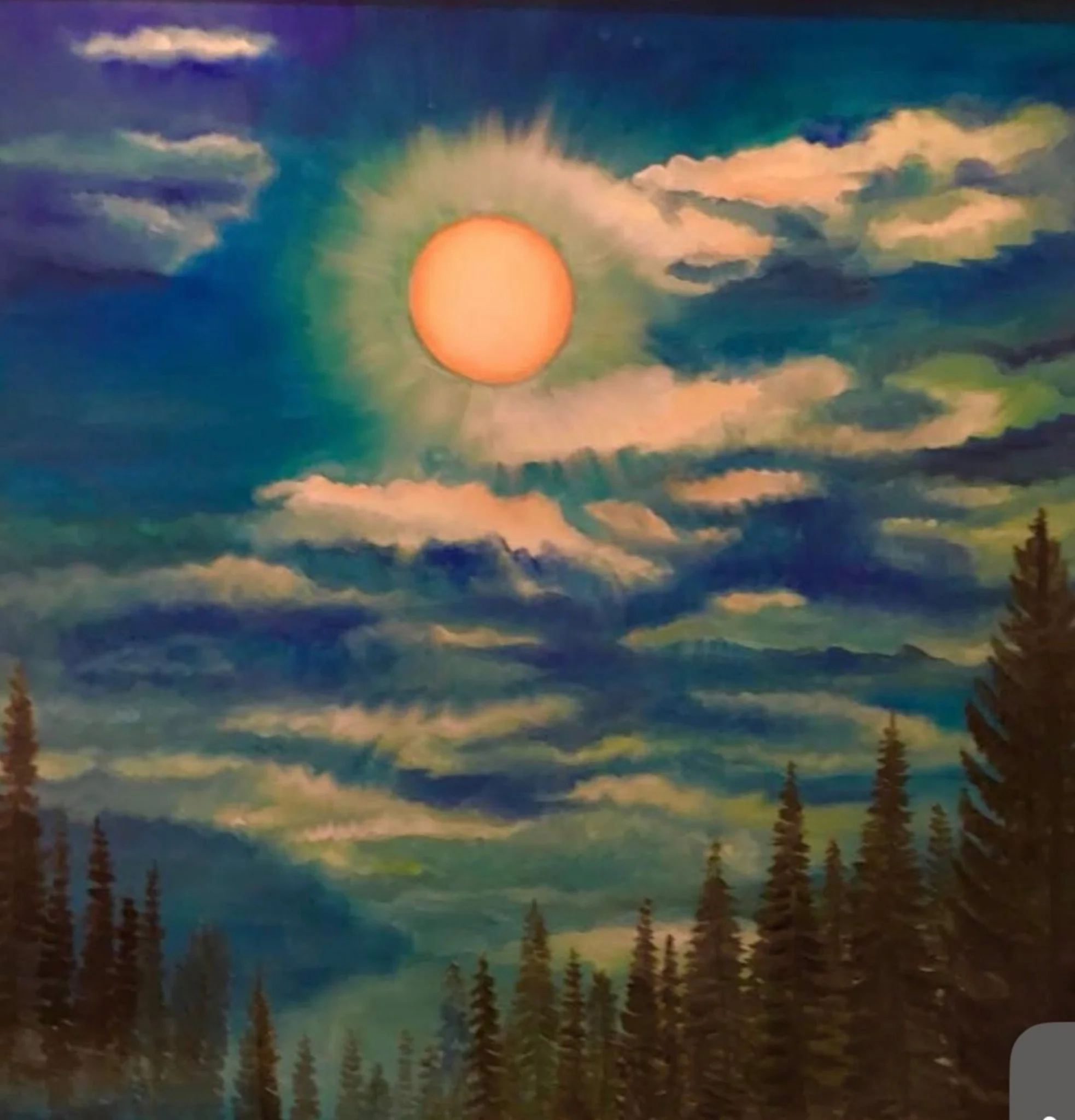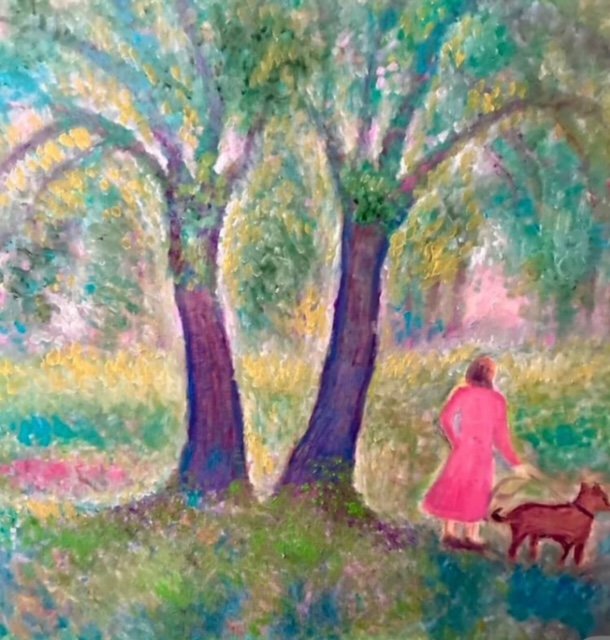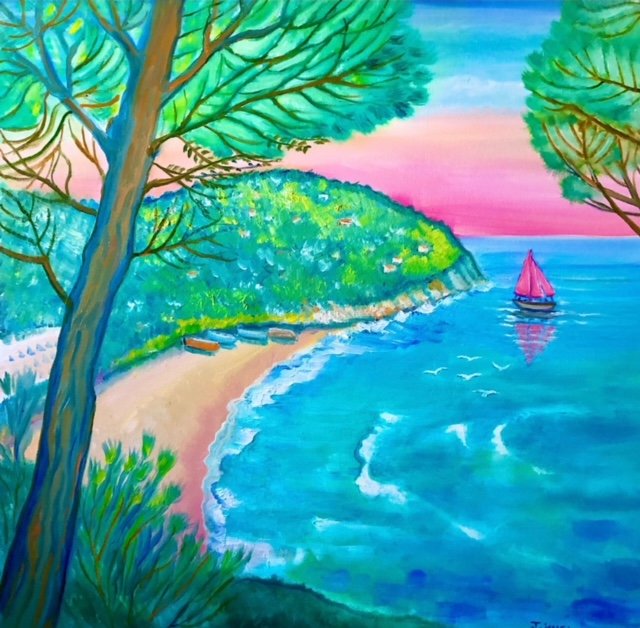Interview with Tamara Michel
Growing up in Ukraine and studying in Moscow, how did these diverse cultural experiences influence your artistic journey, and what key lessons did you take from your formative?
I was born in Ukraine, my mother was half Ukrainian, half Russian and my father was Ukrainian. I lived with my grandmother until I was 11, and started drawing before I went into school. Then I moved to Moscow to my father and began to study painting at the studio of Fine Arts in the Palace of Pioneers, later in a private studio where they prepared for admission to the art institute. My father encouraged my studies and stimulated my interest in art by regularly visiting exhibitions and museums, he taught me to notice the beauty of nature, which I am very grateful for I failed to enter the Academy of Arts and graduated in economics, then I finished postgraduate studies and worked at a research institute. I married and had children and a lack of time to draw.
What prompted your move to Vienna 30 years ago, and how has living and working in this city influenced your artistic style and themes?
We moved to Switzerland and later to Austria and it turned out to be a good chance to develop my creativity, I intensively started to paint. I started regularly to go to Art studios, drawing landscapes in Austria and churches in Vienna, the nature and in parallel I studied at a private art school in various courses. I managed to master the laborious process to paint icons in the old way, the method is very time consuming and does not allow any deviations from the original sample. I also mastered Acrylic painting.
Over the last three decades, how has your art evolved? Can you share some pivotal moments or experiences that significantly shaped your artistic development?
These 30 years were the most intense in my work and were naturally accompanied by changes, preparation for my personal exhibitions brought certain results and changes in style and subject matter. I started painting in oil and became interested in landscapes. The death of my father influenced me so that for a long time I could not draw anything except icons, it helped me a lot. But everything flows, everything changes and after a few years I joined the ranks again and continued my studies in art, first watercolor and then oil, while switching to another color palette that pleases the eye and amuses the soul. Seascapes occupy a special place in my work, I am generally fascinated by the sea. In the beginning, I drew the sea from looking at it in nature, now I draw it from my memory.
You have a unique approach of mixing oil painting techniques with watercolor styles. Could you elaborate on how you developed this technique and what challenges and advantages it presents?
The use of watercolor technique in oil painting happened to me naturally, since I have been doing watercolors for many years. When I started using oil, I automatically used the watercolor technique I was familiar with and I liked the result. Though not on any canvas and not with any paints the desired results are obtained, the method is not suitable for every subject. But, if it succeeds, the result pleases with its freshness and transparency.
As an award winning artist, how do you perceive the role of art in today´s society, and what impact do you hope your work will have on your audience and the wider community?
Despite the most difficult period in the life of society, people need art not less, but more. In particular fine art helps to survive the fear and horror of loss, inspires hope for the future and for a change for the better. These trends are in my works reflected and hopefully have a beneficial effect on some part of society.
Your style is described as a mix between figurative and impressionistic. What draws you to this combination, and how do you balance the two distinct styles in your work?
It´s not easy to define the artistic style of the artist in a specific framework, each style is individual and it also varies depending on the painting. Paintings are not created from the scratch, but reflect the experience and generational traditions, a variety of styles and methods. The distribution is very conditional, I loved the work of impressionists reflecting the instant image and variability of the environment but fancied also Russian artists with their realistic direction. I try to reflect in my work both trends. Beside, I developed interest in paintings with symbolic meaning such as the Hourglass and the Holy Message.
Having had several exhibitions in Austria and your works in private collections across Europe, how do you feel your art contributes to the contemporary art scene and what message do you bring?
I hope my paintings will help people get away from worries and problems and see something attractive, encouraging them to develop their creativity and enjoy nature, take a walk mentally or in reality and see things differently. The color scheme of my paintings carries a positive message that pleases those who look at my art work. Some paintings stimulate change or make you think, which can be a enriching creative process. Spring and summer motifs delight with their blossoming, every year I wait for the nature to awake and to find new motifs.
Could you walk us through your creative process, from the inception of an idea to the completion of a piece?
New painting ideas come without a schedule, when you dont expect them, and you immediately want to draw them, often I start the drawing proccess with a quick sketch on paper, then I pick up paints and brushes and the creative process is going on in one breath without stopping and pause until the first complete result. The main thing is not to overdo it when refining, so that the freshness of the picture does not go away. I am fighting the perfectionism that is triggering me.


















